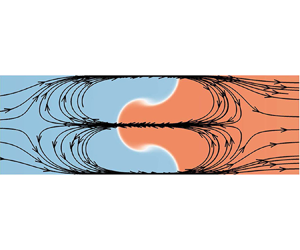Article contents
A unified theoretical model for spatiotemporal development of Rayleigh–Taylor and Richtmyer–Meshkov fingers
Published online by Cambridge University Press: 29 December 2022
Abstract

An initially perturbed interface between two fluids of different densities is usually unstable when driven by an acceleration or a shock wave; it is known as a Rayleigh–Taylor instability or a Richtmyer–Meshkov instability. One of the most significant issues in these instabilities is the spatiotemporal development of fingers generated at the interface, which plays an important role in both scientific research (e.g. supernova explosion) and engineering applications (e.g. inertial confinement fusion). Accurate theoretical solution of these interfacial fingers remains as an unsolved and challenging problem since Taylor's seminal work more than seven decades ago. This paper reports a unified theory established for such phenomena by combining the classical potential-flow theory and a dual-source model to address the long-standing difficulty highlighted by the initial-value sensitivity and strong nonlinearity. It is the first time for a theory to accurately predict the long-time developments in both growth rate and shape curvature of interfacial fingers at all density ratios in two and three dimensions. Moreover, the new theory clearly reveals the nonlinear coupling mechanism for interfacial evolution, and especially explains the origin of overshot in the growth rate curve.
- Type
- JFM Papers
- Information
- Copyright
- © The Author(s), 2022. Published by Cambridge University Press
References
REFERENCES
- 5
- Cited by





